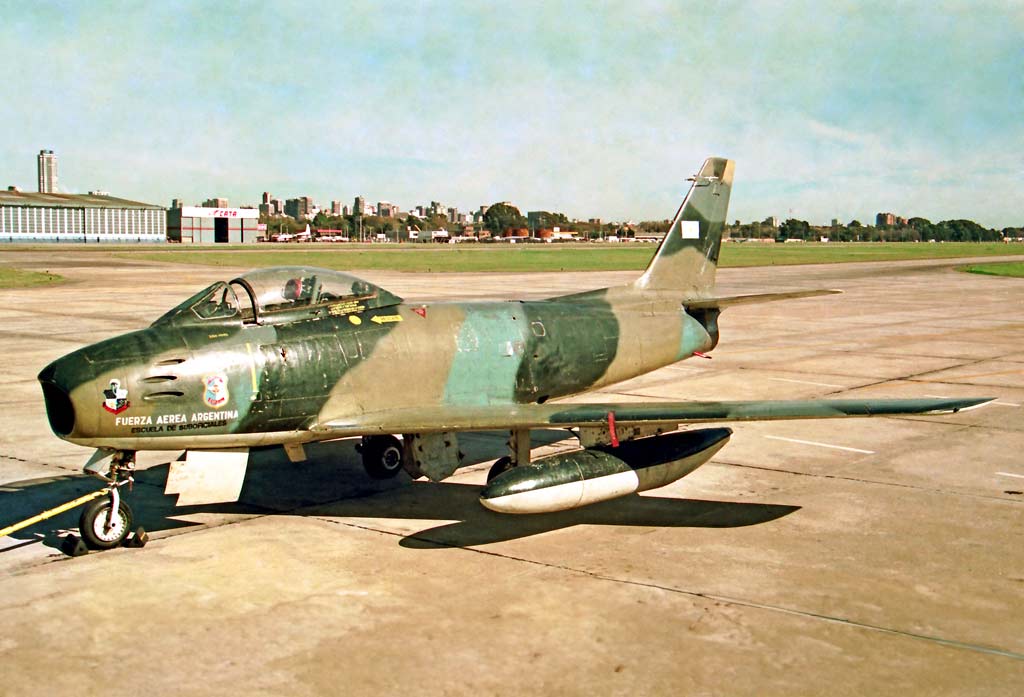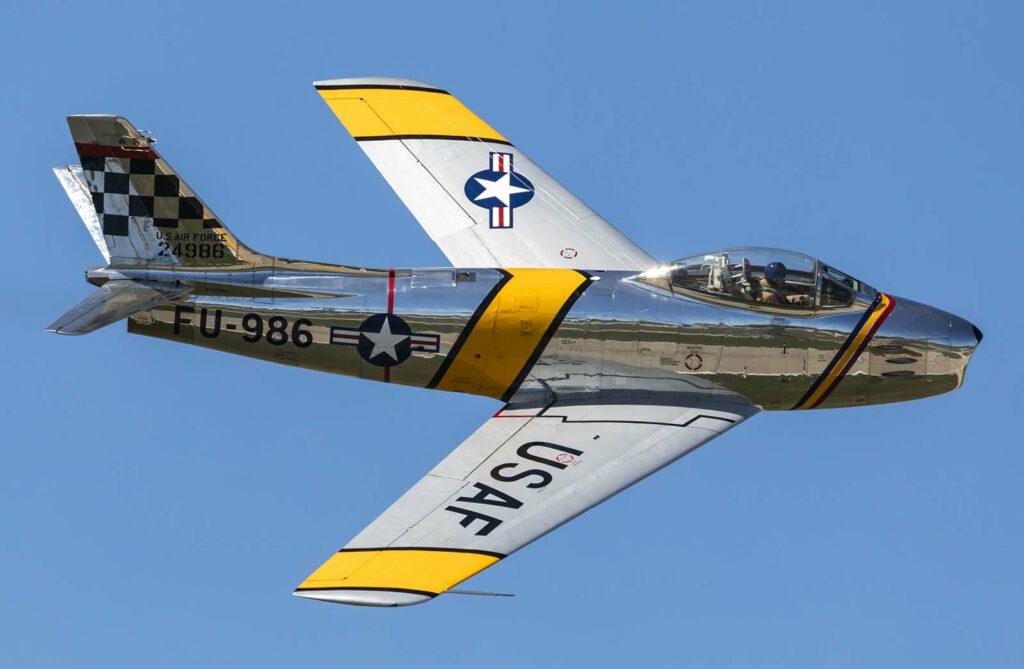The F-86 Sabre, a transonic jet fighter, known for its swept wings and combat dominance in the Korean War, revolutionized air-to-air combat in the 1950s.
The North American F-86 Sabre is an iconic fighter aircraft that played a pivotal role in the early years of jet aviation. This article delves into its development, cutting-edge design, exceptional performance, and significant military roles, particularly in the Korean War.
The F-86 Sabre stands as a landmark in jet fighter design, embodying the technological and strategic shifts of post-World War II aviation.

History of the Development of the North American F-86 Sabre
Developed in the late 1940s, the F-86 Sabre was a response to the evolving needs of aerial combat in the jet age. North American Aviation initiated the project, aiming to create a superior fighter that could counter the advanced jet fighters of potential adversaries.
The program was launched in the context of the burgeoning Cold War, with the first flight occurring on October 1, 1947. The Sabre was developed to provide the United States Air Force (USAF) with an edge in air superiority, leveraging advancements in aerodynamics and jet propulsion.
Design of the North American F-86 Sabre
The F-86 Sabre was a marvel of its time, measuring 37 feet 6 inches (11.43 meters) in length and a wingspan of 37 feet 1 inch (11.3 meters). Its design featured swept wings at a 35-degree angle, a critical innovation for achieving high speeds and improving maneuverability at transonic speeds.
Constructed predominantly from aluminum, the Sabre was equipped with a General Electric J47 turbojet engine. This design provided a balance between speed, agility, and firepower but faced challenges such as limited range and high-speed control difficulties.
Performance of the North American F-86 Sabre
Powered by the J47-GE-27 turbojet engine, the F-86 Sabre could reach a top speed of 687 mph (1,105 km/h) and attain a service ceiling of 49,600 feet (15,100 meters). Its operational range was approximately 1,525 miles (2,454 km).
When compared to contemporaries like the Soviet MiG-15, the F-86 was competitive, particularly in terms of maneuverability and pilot visibility. Its performance in high-speed dogfights was exemplary, setting a new standard for jet fighters.

Military Use and Combat of the North American F-86 Sabre
The F-86 Sabre was armed with six .50 caliber M3 Browning machine guns and could carry rockets and bombs. Its combat debut was in the Korean War, where it gained fame as a dominant air-to-air combat fighter. The Sabre was pivotal in numerous battles and operations, outperforming rivals like the MiG-15 in many engagements.
The F-86 was extensively used by the USAF and was also exported to various allied nations, playing a key role in NATO’s air defense strategy. The aircraft was eventually replaced by more advanced fighters like the F-100 Super Sabre but continued to serve in various air forces worldwide for many years.
The North American F-86 Sabre was a cornerstone in the history of jet fighters, setting high standards in performance, design, and combat effectiveness. Its legacy in aerial combat, particularly in the Korean War, and its influence on subsequent fighter designs, solidify its place as a legendary aircraft in military aviation history.
Back to the Fighter Jet section.